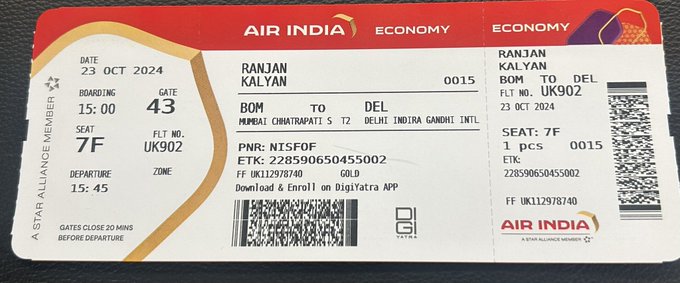Traveler’s Guide Airport Procedures: Embarking on a journey involves understanding the intricacies of airport regulations, check-in protocols, and boarding procedures. This comprehensive guide offers detailed insights and practical advice, ensuring a seamless and stress-free airport experience.
Bag Check-in and Arrival Time

Understanding the broad window for checking bags, which often occurs between 2-4 hours before the flight, provides travelers with a clear timeframe in which to organize their arrival at the airport. It’s critical to understand specific airline restrictions, as certain airports may allow check-in up to 6 hours ahead of time. It’s important to know that check-in for foreign flights is often not accepted before 6 a.m.
Early Check-in Queries
Traveler’s Guide Airport Procedures: Emphasizing the discretionary nature of early check-ins, particularly 12 hours before the trip, assists travelers in managing their expectations and avoiding misunderstandings at the airport. Arriving 2-3 hours before domestic flights and 3 hours before foreign flights ensures a smoother check-in process.
Here is an explanation of the process:
- Discretionary Early Check-Ins:
- Travelers should be aware that the option to check in 12 hours before the scheduled flight is subject to the discretion of the airport staff.
- While some major airports may allow this, it’s not a guaranteed service, and travelers should be prepared for the possibility that this might not be available at all airports.
- Recommended arrival times:
- For domestic flights, it is advisable to arrive at the airport at least 2-3 hours before the scheduled departure time.
- Similarly, for international flights, travelers should aim to arrive at the airport at least 3 hours in advance of the departure time.
By understanding the discretionary nature of early check-ins and adhering to the recommended arrival times, travelers can better manage their expectations and ensure a smoother and more efficient check-in process at the airport. This approach helps to minimize any potential misunderstandings and allows travelers to plan their journey effectively.
Online Check-in and Boarding Pass Traveler’s Guide Airport Procedures
Providing clear information on the process of checking in online, including the required period for dropping off baggage at the counter, helps travelers prepare for a trouble-free encounter. As a precaution, travelers should print their boarding cards, even if they have a mobile version, to avoid potential complications during the boarding procedure.

- Online Check-In Process:
- Utilize the airline’s online check-in platform to complete the initial check-in process.
- This allows you to secure your seat and obtain your boarding pass electronically without visiting the check-in counter at the airport.
- Baggage Drop Timeframe:
- Ensure you drop off your checked baggage at the designated counter within the specified time frame.
- The time limit for dropping off baggage is typically 60 minutes before the scheduled departure for international flights and 30 minutes for domestic flights.
- Boarding Pass Precautions:
- Although you may have a mobile version of your boarding pass, it’s advisable to print out a hard copy as well.
- Having a physical copy as a backup prevents potential complications during the boarding process, especially in cases where electronic devices may malfunction or encounter connectivity issues.
By following these Traveler’s Guide Airport Procedures steps and adhering to the recommended precautions, travelers can ensure a smoother and more efficient check-in process, reducing the likelihood of any unexpected complications or delays during their travel experience.
Procedures for International Flights
Traveler’s Guide Airport Procedures Offers complete step-by-step guidance for international flight processes, including precise data about bypassing the check-in counter when using online check-in, will assist tourists in navigating the airport more effectively. Highlighting the numerous checkpoints, such as security, immigration, and baggage claim, provides a better grasp of the airport procedure as a whole.
Here is a step-by-step Traveler’s Guide Airport Procedures breakdown of the international flight process:
- Online Check-In: Take advantage of online check-in facilities to save time. This process allows you to bypass the traditional check-in counter, simplifying the initial stages of your airport journey.
- Baggage Drop: Proceed directly to the baggage drop area after completing the online check-in process. Here, you can check in your baggage, ensuring it complies with the airline’s guidelines and weight restrictions.
- Security Check: Move to the security checkpoint for a thorough examination of your carry-on luggage, personal items, and travel documents. Be prepared to follow all security protocols and guidelines to expedite this process.
- Immigration Clearance: Upon passing the security check, proceed to the immigration counter for document verification. Ensure you have all necessary identification, travel visas, and other essential paperwork readily accessible for inspection.
- Boarding and Disembarking: After successfully clearing immigration, proceed to your designated boarding gate. Be attentive to the boarding announcements and adhere to the boarding procedures outlined by the airline staff.
- Immigration Re-Entry: Following the completion of your journey, be prepared to undergo immigration re-entry procedures at your destination airport, which may involve document checks and identity verification.
- Baggage Claim: Once you have disembarked the aircraft, proceed to the baggage claim area to collect your checked-in luggage. Ensure you identify your belongings accurately and report any issues immediately to the airline staff if necessary.
By adhering to these Traveler’s Guide Airport Procedures step-by-step guidelines and being mindful of each stage of the airport process, you can streamline your international travel experience and ensure a seamless and efficient journey from check-in to baggage collection.
Early Airport Arrival and Overnight Stays
Clarifying the differences in early security check-in times at different airports, as well as any limits regarding overnight stays, as well as the requirement for a valid booking or boarding pass, assists travelers in better planning their pre-flight stay.
When addressing the differences in early security check-in times at various airports, it’s critical to emphasize the various restrictions and procedures that each airport may have. While some airports enable passengers to go through security checks many hours before their scheduled departure time, others may impose limits, allowing tourists to check in only 2 to 5 hours before departure. Travelers may successfully plan their arrival at the airport by defining these variations, ensuring they stick to the precise criteria provided by the individual airports, and avoiding any difficulties or delays.
Furthermore, for passengers wanting to spend the night at an airport, it is critical to understand the criteria and limitations associated with overnight stays, including the requirement for a valid booking or boarding permit.
Many airports allow travelers with confirmed airline reservations or valid boarding tickets to stay overnight, making it a safe and convenient option for those with early morning departures or long layovers. By underscoring the importance of having these necessary documents, travelers can plan accordingly and avoid any potential conflicts or misunderstandings with airport personnel.
By thoroughly explaining the differences between early check-in hours and the requirements for overnight stays, such as the requirement for a valid booking or boarding pass, visitors may make well-informed selections and arrange their airport visit efficiently. This clarity and awareness allow travelers to successfully negotiate airport policies and restrictions, ensuring a smooth and enjoyable pre-flight experience.
Boarding Time and Security Check
Reiterating the significance of being at the airport at least 3 hours early for international flights, with a specific focus on customs and security, assists travelers in successfully managing their time. Providing a proposed arrival time for a 7 a.m. domestic flight helps travelers have enough time for check-in and security inspections.

Emphasizing the importance of arriving at the airport well in advance of international flights serves to underscore the complexities associated with clearing customs and security checks. By arriving at least 3 hours early for international flights, travelers allow themselves sufficient time to complete the necessary procedures, including documentation verification, immigration processing, and security screening. This additional time buffer helps prevent any last-minute rush or stress that might arise from unforeseen circumstances, ensuring a smoother and more relaxed pre-departure experience.
Furthermore, suggesting an arrival time of at least 2 hours before a 7 a.m. domestic flight assists travelers in preparing for the check-in and security processes specific to domestic travel. This timeframe allows passengers to manage any potential queues or delays that could occur during the check-in process, security screening, and boarding. Additionally, it provides them with adequate time to address any unexpected issues that might arise during the airport procedures, such as luggage complications or document checks.
By adhering to these recommended arrival times, travelers can proactively navigate the intricacies of the airport, anticipate potential delays, and maintain a stress-free journey. Planning ahead and allowing ample time for necessary airport procedures ensure a smoother travel experience, enabling passengers to focus on their journey ahead with confidence and ease.
Boarding Pass and Ticket Clarifications
Explaining the difference between a boarding card and a ticket, namely that the boarding pass is the “ticket” to board the plane while the ticket is generated as an “e-ticket” during the booking process, assists travelers in understanding the complexities of the check-in and boarding procedure.
Understanding the distinction between a boarding pass and a ticket is crucial for travelers as it provides clarity on the various stages of the check-in and boarding process. Here’s a breakdown that can help simplify this concept:
- Boarding Pass: The boarding pass serves as the document that permits passengers to board the plane. It is typically issued upon completion of the check-in process, either online or at the check-in counter. It contains essential information such as the passenger’s name, flight details, seat assignment, and boarding time. The boarding pass acts as a tangible authorization for the passenger to proceed through security and onto the aircraft.
- Ticket: On the other hand, the ticket is generated at the time of booking and is commonly referred to as an “e-ticket” or electronic ticket. It is essentially the confirmation of the passenger’s reservation on a specific flight. The ticket includes crucial details such as the passenger’s itinerary, booking reference number, and fare class. It serves as proof of the purchase of a seat on the flight and holds significant value in confirming the passenger’s eligibility to travel on the chosen route.
By grasping this difference, travelers can appreciate the sequential nature of the air travel process. First, they book their ticket, which confirms their reservation on a particular flight, and then they acquire their boarding pass during the check-in process, which grants them access to the aircraft.
Checked Bag Security Traveler’s Guide Airport Procedures
The significance of inspecting baggage for forbidden items, along with a clear warning about potential civil and criminal fines, urges travelers to pack with prudence and awareness. Giving instructions on what to look for during the luggage check can help to avoid unneeded issues and delays during the security process. To prevent potential civil and criminal penalties, travelers should be mindful of the following guidelines during the baggage check:

- Restricted Items: Familiarize yourself with the list of items that are prohibited or restricted for air travel, including sharp objects, flammable materials, explosives, and certain liquids, which may not exceed the specified volume limit.
- Packing Techniques: Use appropriate packing techniques, such as organizing your belongings in clear, resealable plastic bags for liquids, gels, and aerosols, and placing sharp items in secure and protective cases to prevent any accidental harm or damage.
- Documentation for Special Items: If you are carrying any special items, such as medical equipment, fragile goods, or valuable possessions, make sure you have the necessary documentation or permits to avoid any misunderstandings during the baggage check.
- Compliance with Size and Weight Restrictions: Ensure that your baggage complies with the airline’s size and weight restrictions, as exceeding these limits might lead to additional fees or the need to remove certain items from your luggage.
- Security Screening Process: Be prepared for the security screening process by removing any electronic devices, liquids, and large metal objects from your baggage, placing them in separate trays for inspection, and cooperating with security personnel during the screening.
Conclusion
Traveler’s Guide Airport Procedures: Effectively navigating airport procedures is essential for a successful and enjoyable travel experience. By following the specific guidelines and practical tips outlined in this guide, you can streamline your airport journey, ensuring a smooth departure and making the most of your travel adventure.
Related articles YOUR ULTIMATE GUIDE TO FLIGHTS FROM LAGOS TO TOKYO: OPTIONS, DURATIONS, AND PRICES








